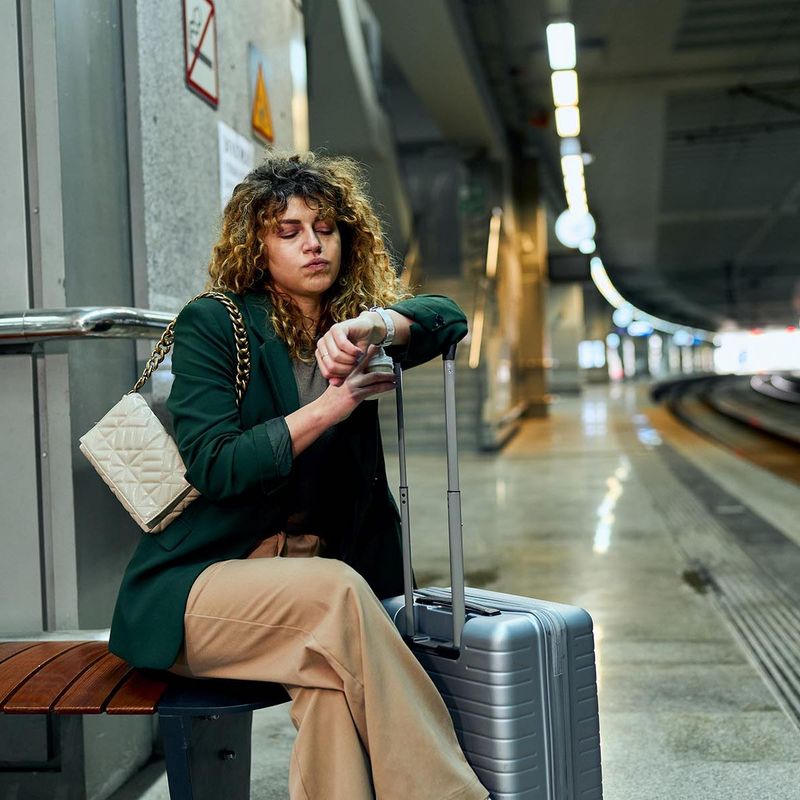8 May 2025
Cycling is cheap, good for your health and the climate, and relieves chronically congested urban streets. In Münster, 47 percent of journeys are already made by bike. Big cities such as Berlin or Hamburg have also taken up the cause of promoting cycling. We talked to Christian Rudolph, Professor of Cycling Planning at the Technical University of Applied Sciences Wildau, about what a good and safe cycling infrastructure might look like.
Mr. Rudolph, what are the hallmarks of a good cycling infrastructure that allows people to cycle both safely and enjoyably?
Christian Rudolph: Cycle paths must be safe, convenient, coherent, direct and attractive. These are the five central principles according to which they have been created in the Netherlands for decades. What this means in specific terms is that a cycle path must be wide enough for cyclists to ride side by side or be overtaken by a cargo bike. Its surface must so designed as to permit riding in all weather conditions. You must be able to get to your destination as directly as possible, which is very important, especially for commuters. It must be clearly visible, by which I mean marked in colour, for example, to signal to motorists and pedestrians that caution is advised here. And a cycle path network must leave no gaps, so that it doesn’t suddenly eject you onto a main road.
You get cycle paths on the pavement, cycle lanes on the road and protected cycle paths that are separated from motor vehicle traffic by bollards, for example: Is there a best choice here?
A large-scale survey with 22,000 participants has shown that a clear majority prefers protected cycle paths. As do motorists, as a protected cycle path gives them the assurance that cyclists won’t suddenly veer out in front of them. In the case of cycle lanes on the road, a mistake by a driver can be life-threatening for cyclists. And despite an absolute ban on parking, they often get blocked by parked vehicles. This puts cyclists in dangerous situations time and again, as they have to keep swerving into the flow of traffic. To counteract this, it’s up to local authorities that have invested in such infrastructures to consistently punish illegal parkers. You don’t have this problem on protected cycle paths – but they take up more space, of course. In addition to bollards or concrete dividers, they can also be separated from motor vehicle traffic using plant pots or green spaces. This is of benefit not only to the cityscape, but also to biodiversity and attempts to develop sponge cities, as it creates permeable surfaces that allow rainwater to seep away.
So, we should be moving towards protected cycle paths on the road and away from the familiar high-side cycle paths on the pavement?
Not necessarily. In Amsterdam and Copenhagen, for example, there are lots of high-side cycle paths, but they are just as wide as road-based lanes, allowing cyclists to easily ride side by side and also to overtake. In Copenhagen, these cycle paths are separated by curbs from both the carriageway and the pavement. This means that drivers, cyclists and pedestrians all have their own level as they navigate the city’s streets. A simple and effective measure to avoid conflicts between the various road users.
© Adobe StockRed cycle lane in Berlin. However, a survey showed that cyclists prefer cycle paths that are protected from cars.
© Adobe StockWorth seeing and cleverly solved: The Hovenring in Eindhoven is a suspended circular bridge - cyclists cross a busy link road here.
How do you make intersections safe for cycling?
Most serious to fatal accidents in Europe are caused by vehicles turning right; in the UK, of course, it’s turning left that’s the problem. To minimise risks, the visual relationship between turning cars and lorries and cyclists needs to be improved. This is why, in the Netherlands, small traffic islands are built at the corner of intersections, thus increasing the curve radius for those turning. Cars and lorries have to drive in a quarter circle, so to speak, slowing them down and enabling them to see cyclists directly through the windscreen and not just in the wing mirror. Based on the Dutch model, Aachen has developed a standard for safe intersections in Germany, which is being used here in the construction of new intersections and the adaptation of existing ones. To improve safety, the green phases of bicycle and motor vehicle traffic can also be separated from each other at traffic light intersections. However, this leads to longer waiting times, which inevitably brings policymakers into the decision.
And roundabouts?
Here, too, it’s worth taking a look at the Netherlands. There, cyclists usually have priority at roundabouts in built-up areas so that they can ride safely. Drivers must watch out and give way; outside built-up areas it’s the other way around.
In residential areas and side streets, cars often park right up to intersections, even though this is prohibited. What can local authorities do to deal with this?
This is a major safety risk, especially for children, because they’re often hardly visible to motorists from behind parked vehicles. To prevent this kind of illegal and dangerous parking, bollards and bicycle parking facilities are now being built at affected intersections in the Berlin districts of Neukölln and Friedrichshain-Kreuzberg. This creates good visibility while also offering opportunities for cyclists to park their bikes – thus killing two birds with one stone. However, safe intersections and cycle paths aren’t enough. Strategic planning for a cycle path network must always also include the control of motor vehicle traffic.
What does that mean specifically?
In the Netherlands, lots of cities have developed traffic circulation plans which they use to make driving on some routes more difficult and cycling easier. Here's how people learn: If you take your car for this journey, it will take you ten minutes, whereas if you go by bike, you’ll get there in two. This makes the switch attractive while at the same time reducing the density of motorised traffic, as the same stretch of road can accommodate significantly more bicycles than cars.
In addition to other traffic-calming measures, Oslo introduced a general 30 km/h speed limit in 2019 which applies to more than 70 percent of all roads. With what result? The traffic flows better, it takes you the same amount of time or not noticeably longer to get from A to B, and, most importantly, you get there more safely. There have been no traffic fatalities in inner city Oslo for two years now. The often invoked “Vision Zero” is already a reality there. In Brussels, a similar trend has been evident since the introduction of a 30 km/h speed limit. In Germany, the amendment of the road traffic regulations in 2024 has been a good initial approach. This makes it easier for local authorities to set up 30 km/h zones as well as cycle lanes, bike-only roads and cycle parking spaces.
If we want to improve safety, are we going to have to redistribute the limited space available to us in our cities?
There’s no getting around this. But while there has been cross-party consensus on this issue in places like the Netherlands for decades, it has recently become the subject of bitter and often polemical debate. Instead of playing cyclists and motorists off against each other, we must make it clear that, if you reinforce the environmental network – meaning cycling, walking and public transport – and link all parts of it together really well, everyone wins. Even those who, for various reasons, prefer the car. Because for every cyclist there’s one fewer car on the road.
In the suburbs and rural areas, however, cars are often necessary, and there’s no alternative.
But here, too, attractive counteroffers can be created by expanding public transport and the cycle superhighway network to allow cyclists to reach their destinations quickly and in a relaxed way by e-bike. This requires a negotiation process in which local citizens get involved and different mobility needs get reconciled in the best possible way. And in addition to the the right level of financial resources, there’s also a need for sufficient numbers of skilled workers in planning and administration, who have all too often been lacking in the past. The overarching goal must be traffic planning that makes the safety of children the benchmark. After all, if children can move about safely on their own in public spaces, if they can cross the street safely and cycle safely on their own – from as early as the second or third year of school onwards – then everyone else will also reach their destination safely.
About Christian Rudolph
© TH Wildau | Mareike RammeltChristian Rudolph is Professor of Cycling Planning and Head of the Endowed Professorship for Cycling in Intermodal Transport Networks of the Federal Ministry of Digital and Transport at the Technical University of Applied Sciences Wildau. His work focuses on innovative bicycle concepts, the commercial use of cargo bikes, cycling in rural areas and the improvement of road safety.






